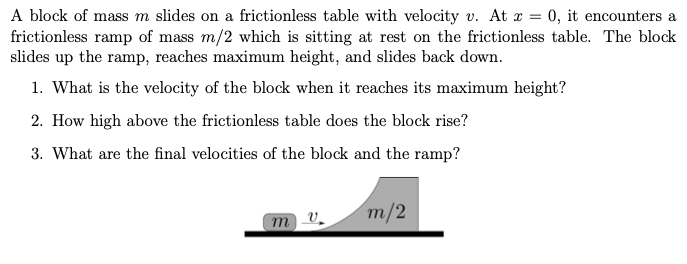A block of mass m slides on a frictionless table with velocity v. At x = 0, it encounters a frictionless ramp of mass m/2 which is sitting at rest on the frictionless table. The block slides up the ramp, reaches maximum height, and slides back down. What is the velocity of the block when it reaches its maximum height? How high above the frictionless table does the block rise? What are the final velocities of the block and the ramp?
